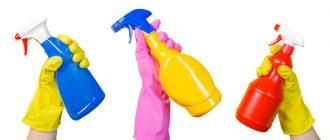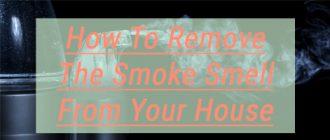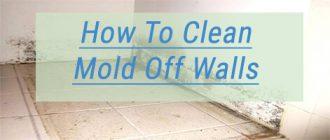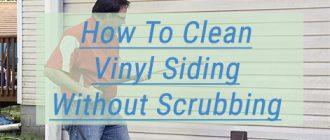Linoleum is versatile and beautiful. Without a proper cleaning regimen, however, this surface can dull and scratch. We’ve got the correct way to clean your linoleum floors to preserve their beauty and keep them looking newer for a lot longer. Let’s take a look.
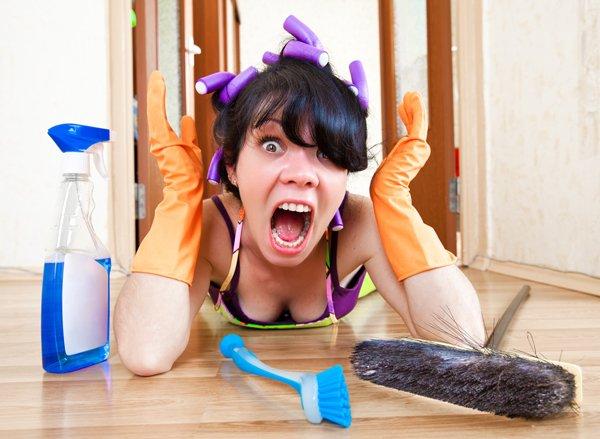
Why Is Linoleum Tricky?
Linoleum is a lower cost floor cover compared to laminate or vinyl. It’s a bit softer, giving it that trademark bounce. It’s durable, but it won’t withstand any sort of harsh cleaners or abrasive cleaning solutions.
Here you can choose the best mop for laminate floors.
Making a mistake cleaning your linoleum can cost you the shine and beauty of the design. Abrasive cleaners dull the surface area over time, causing significant scratching and allowing dirt to get trapped in those scratches. If it gets any worse, no cleaning solution in the world will relieve the dinginess.
Cleaning Linoleum: The Basics
Before you clean the surface area, it’s crucial that you vacuum or sweep to remove large or abrasive debris. Use the hard floor setting on your vacuum and make sure you get into all the corners and crevices of your room.
Linoleum appreciates basic, gentle soaps without any bleaches or abrasive components. The milder the soap, the easier it is to preserve the finish of your linoleum.
Linoleum is susceptible to water damage, so using tools that don’t encourage puddling avoids that issue. If you’re using a standard mop, make sure you wring it out thoroughly. It should be damp to the touch but never dripping.

Linoleum is excellent at attracting soap residue, giving it that dingy look and the slightly sticky feeling some people hate about this surface. Going over cleaned linoleum with fresh, hot water can help remove that sticky residue and prevent dull surfaces in the first place.
When you need to disinfect your linoleum, white vinegar is a low acidic option. Other types of disinfectants can strip the finish over time. It’s usually not necessary to sanitize your linoleum each time, but when you need to, a natural option is best.
Cleaning Linoleum Step-By-Step
Now that you know the basics, let’s go over your steps. Vacuum and sweep so your surface is free of debris.
Basic Cleaning
For mild to moderately dirty floors.
You’ll need:
- gentle dish soap (blue Dawn is a classic)
- mop
- bucket for mixing solution and for water
- a towel
- Mix a few drops of dish soap into a gallon of water.
- Dip your mop in the bucket and wring the mop until there are no drips.
- Begin to go over the room in small sections, frequently redipping the mop in the soapy water and wringing out the excess.
- When you’ve finished the entire floor, empty the bucket and fill it with clean, hot water.
- Go over the floor again, this time with the hot water, to remove any soapy residue and help it shine.
- After this step, go over the floor with a towel to help mop up any excess water.
Vinegar-Based Cleaning
For disinfecting floors.
You’ll need
- a fourth cup white vinegar
- a gallon of hot water
- mop
- towel
- Fdd the vinegar to your hot water to create the disinfecting solution.
- Dip your mop in the bucket and wring out any excess until the mop is free of drips.
- Work the solution into the floor in sections.
- When the floor is finished, repeat steps five and six from above.
Castile Soap Cleaning
If you need to disinfect, but you can’t (or don’t want to) use vinegar, another alternative is Castile Soap.
You’ll need:
- two tablespoons of Castile soap
- a gallon of hot water
- mop
- towel
- Mix the Castile soap into the water making sure it completely dissolves.
- Dip your mop into the solution and wring out any excess water. The mop should be damp with no dripping.
- Follow steps three through six from the Basic Cleaning section. It’s important to completely dry the floor to prevent the possibility of water damage.

Deeper Cleaning
Set in stains and linoleum that’s been cleaned incorrectly for a while may need some extra power. It’s important not to use abrasive materials regularly, but sometimes you need a catalyst to get things started.
Baking Soda
Some safe alternatives to harsh abrasives could be a little baking soda mixed with water.
For stains, you’ll need:
- a tablespoon of baking soda
- enough water to make a paste
- Mix the baking soda and water to form your paste.
- Fpply the mixture and use a soft cloth to rub the stain in a circular motion gently.
- Rinse the solution away and mop as usual.
For removing film, you’ll need:
- two or three tablespoons of baking soda
- six to eight drops of gentle dish soap
- a gallon of hot water
- mop
- towel
- Mix baking soda, soap, and water together until everything is dissolved.
- Dip your mop into the solution and wring it gently. It should be slightly more wet than the basic cleaning directions.
- Work the solution over your floors in sections using a broader circular motion with your mop. Be gentle.
- Rinse the solution when you finish the floors by going over it with plain, hot water. Reach down and feel the floor periodically to be sure there’s no leftover grit.
- Gently dry the floor and check for grit again. Repeat until the floor sparkles.
Scrub Brush
An alternative to baking soda is to use a scrub brush with your soap solution instead of a mop.
You’ll need:
- scrub brush
- soap solution from the basic cleaning steps
- Gently rub the stain in circular motions until it begins to lift.
- Mop the floor following one of the direction sets above and be sure to dry thoroughly.
Borax
If you notice a smell on your linoleum floors, or if you hate the smell of vinegar, an alternative is Borax.
You’ll need:
- two tablespoons of borax
- a gallon of hot water
- mop
- towel
- Mix the borax into a gallon of hot water. Make sure it’s completely dissolved.
- Wash your floors following the steps above, being sure to dry the floors thoroughly.
Borax is also a mild insect repellant. If you’re dealing with a trail of ants in your kitchen or bathroom, this might be just the thing to help you win.
Final Thoughts
Linoleum gets a bad reputation for being something in your grandmother’s house, but in reality, they’re a durable and cost-effective alternative to more expensive types of flooring. If you take care of the surface and prevent stripping it, you should enjoy the feeling of your linoleum for a long time.

The disinfecting and abrasive methods are only for occasional cleaning. You should be using the basic cleaning method the majority of the time so that you don’t accidentally strip the finish. The dish soap method should give you sparkling linoleum floors without leaving behind a sticky residue or dingy film. Take care of your linoleum, and it should last you many years.
How many surfaces in your home use linoleum? Are you working with new linoleum or did you inherit an older linoleum surface? Tell us all about it in the comments below.

